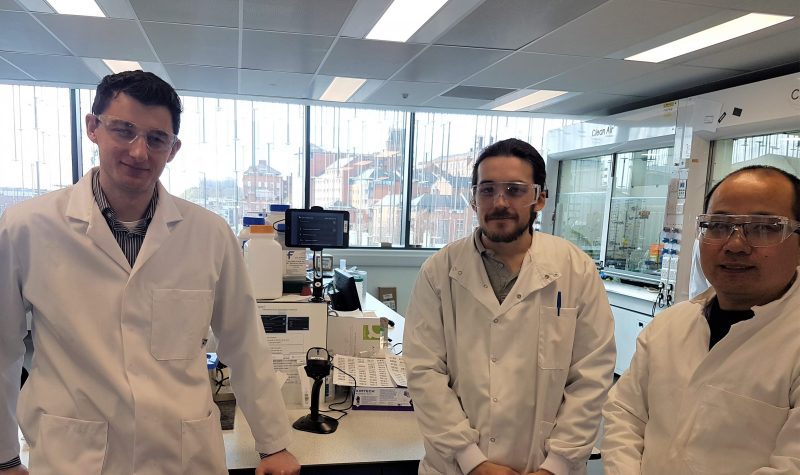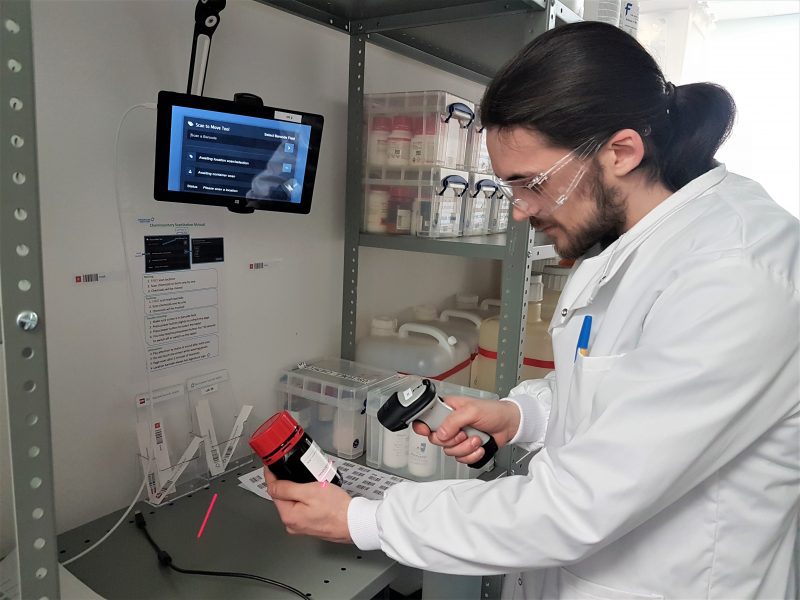Where’s my chemical?
Time is money in drug discovery, so anything that avoids wasted time – however small it might seem – will help speed up the process and reduce costs. We realised that searching for the chemicals we need can take a frustratingly long time if they’re not where they should be. There had to be an easier way.
Sygnature already had a database, run by Cambridge-based ChemInventory, that details all of our chemicals and their locations. But keeping it up to date relied on us logging in to the system on a computer whenever we took or moved a chemical, taking several minutes. It was all too easy to think, ‘Oh, I’ll do it later,’ and then forget all about it, leaving the database inaccurate. How could we fix it?

The scientists behind Scan Station; from left to right: Dr Grabski, Mr Salsbury and Dr Qin.
The inspiration lay in self-scanning check-outs in the supermarket. Like groceries, bottles of chemicals have individual barcodes that identify them. Working with ChemInventory, we developed a system called ScanStation that uses these barcodes. It relies on low-cost tablet computers attached to barcode scanners. They’re always on, and are placed in strategic locations around our labs.

Every time we take a chemical from stores or another scientist’s fume hood, first we scan the barcode on our staff ID cards to identify us, and then we scan the barcode on the bottle. The ScanStation automatically updates the database with the person now responsible for the chemical. If we finish the bottle, then we scan a ‘trash’ barcode by the ScanStation followed by the bottle’s barcode. This tells the database it is empty, and it will be deleted from the system.
This new process is so much easier. There’s no need to remove gloves to log in to the computer – just a quick zap on the scanner and it’s done. Now, when we check the database for a chemical, we get an instant answer that reliably tells us whether we have any in stock, and where we will find it.
The system has been up and running for a few months, and we’ve now rolled it out across the whole company. Everyone, from our chemists and computational scientists to bioscientists and DMPK experts, routinely scans every bottle of reagent or solvent when they take it, and we’ve had really good feedback about how easy it is to use. It might seem like a little thing, but all those minutes we save will have a real benefit in our productivity – and the time it takes for us to help our clients discover new medicines.
